2017 Genesis G90 Review: First Drive

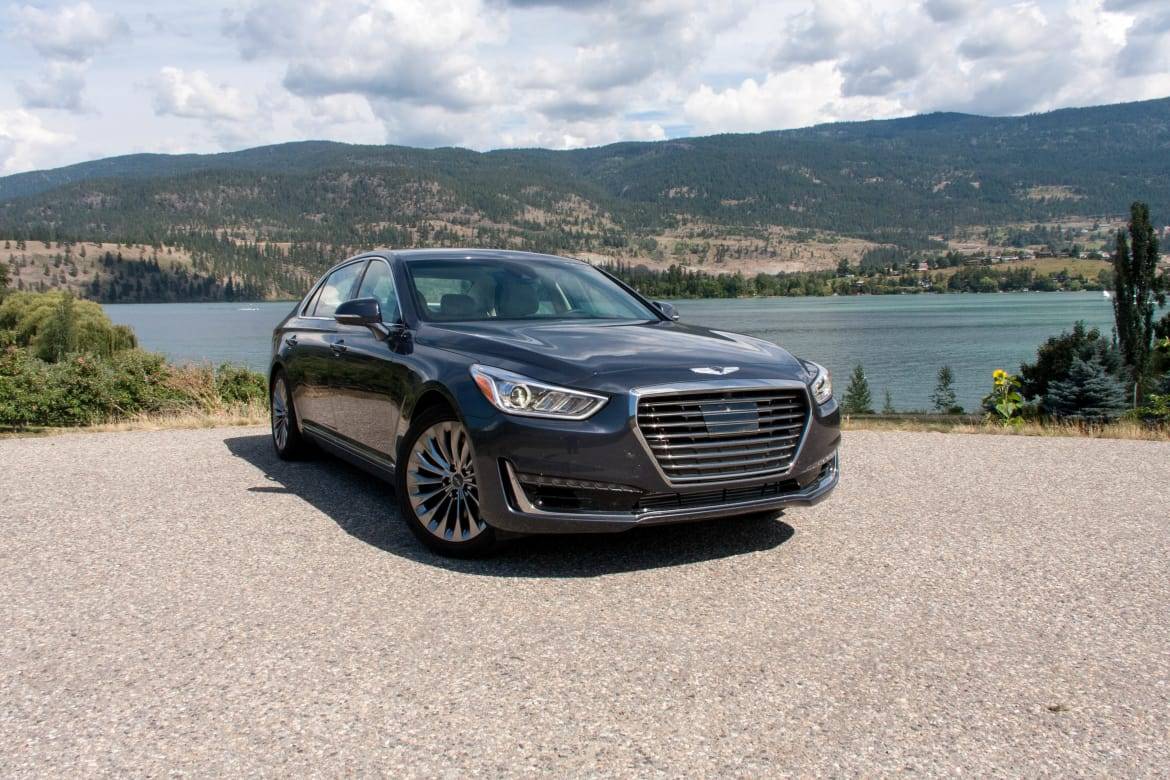
CARS.COM — Genesis is preparing to introduce itself to the world and will put its first two vehicles on sale this fall: the G90 flagship luxury sedan and the G80 midsize sedan. The G90 is an updated version of the Hyundai Equus, while the G80 was formerly known as the Hyundai Genesis.
Related: Genesis Debuts Complimentary Perk Packages With G80, G90
What Genesis is trying to do is very difficult. If you count Tesla as a luxury brand, Genesis is the second luxury make to launch in the 2000s. If you don’t, the previous luxury launch was in 1989 when Lexus and Infiniti joined the fray.
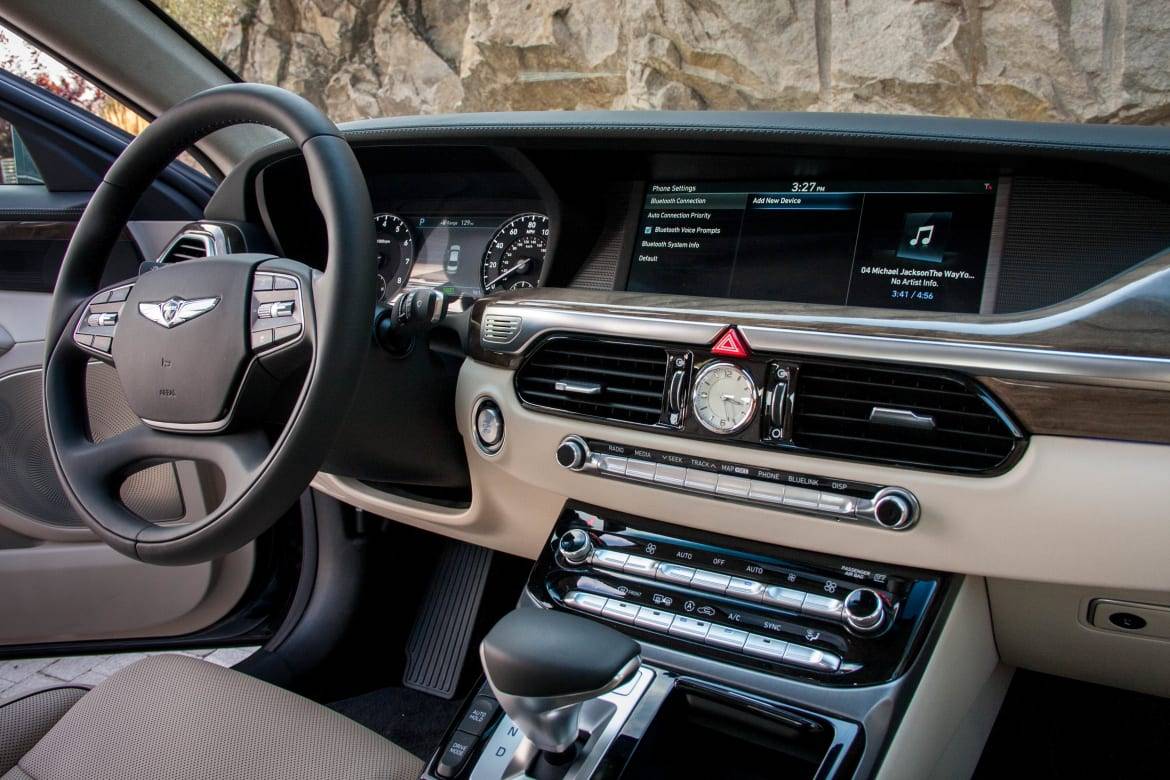
I drove the G90 around British Columbia to see if it has what it takes to carry the flag for a new luxury brand.
Genesis is keeping things simple with the G90 — there are two trim levels, 3.3T Premium and 5.0 Ultimate. The Ultimate adds an executive backseat with powered and ventilated rear seats and LED headlights. The only option for either trim level will be rear- or all-wheel drive.
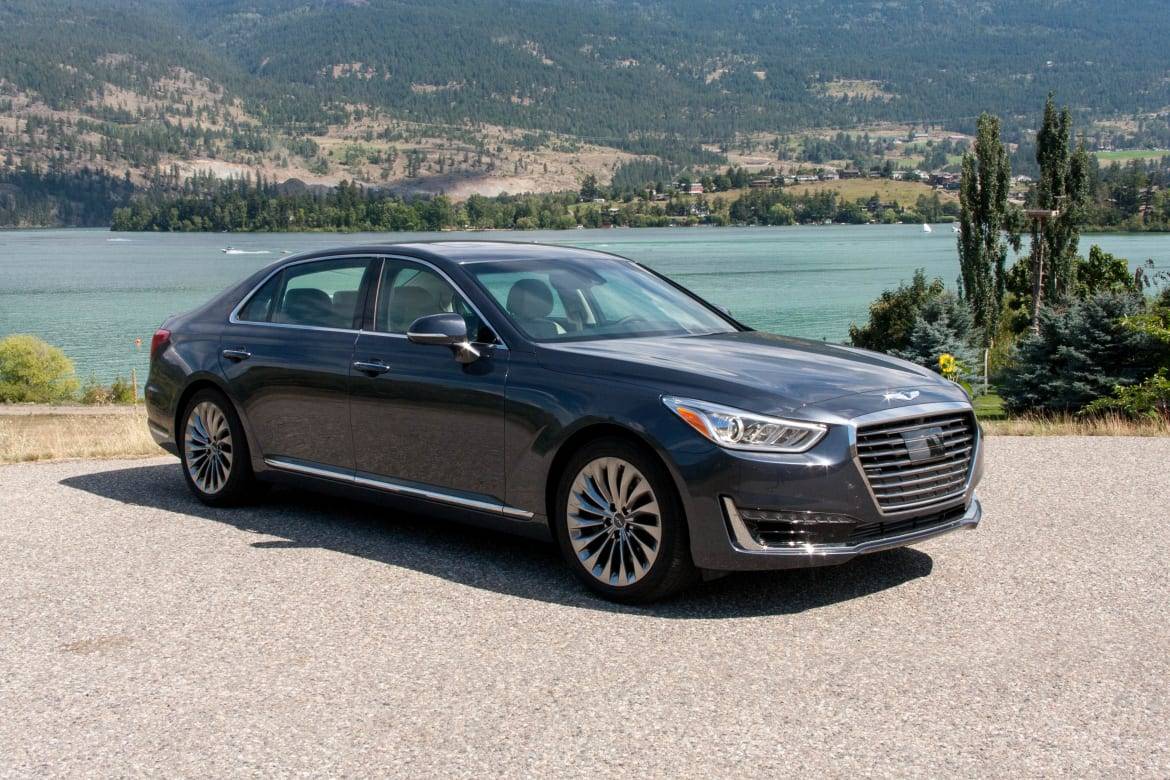
Exterior Updates
The G90’s styling is a reverse mullet — party in front, business in back.
Leading the way is the new Genesis winged logo perched atop a large grille that gives the G90 its visual signature. These days, big grilles are definitely in and the G90’s is one of my favorites, managing to straddle the line of being large and bold without looking too agape. However, if you live in a state where you have to have a front license plate, that’s going to cramp the G90’s style.
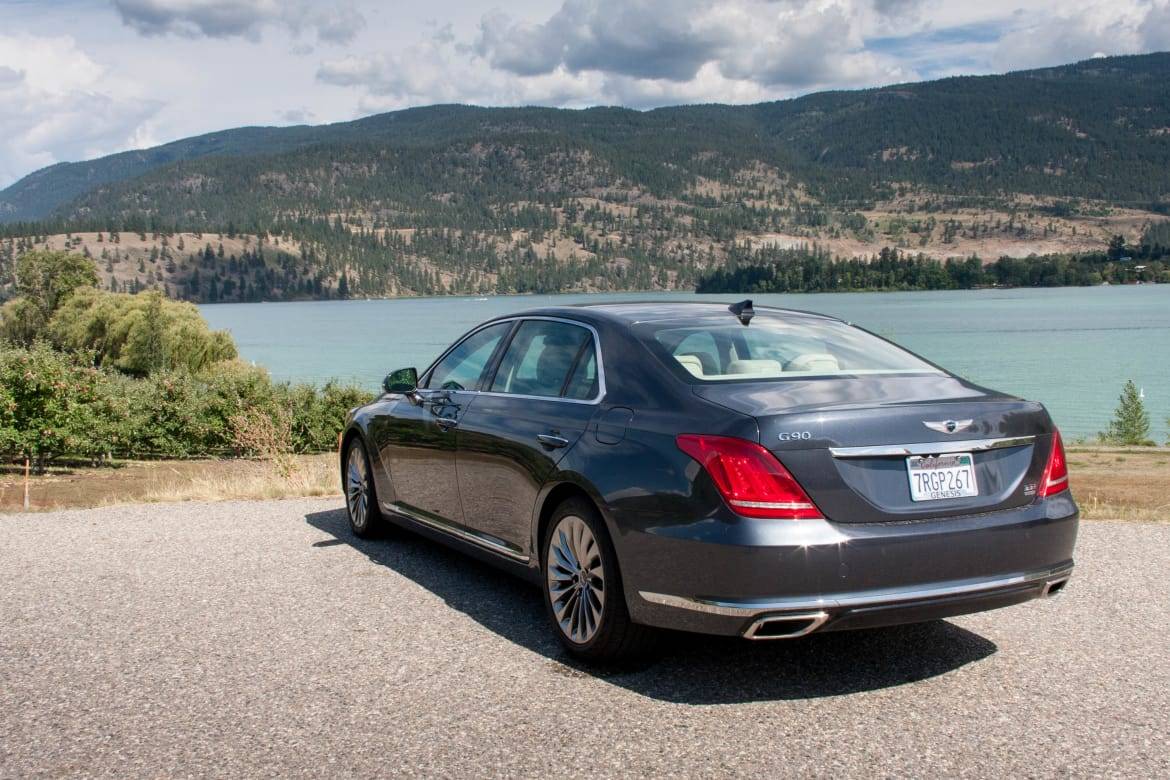
Out back, though, things are much less exciting. The G90 looks so nondescript from the rear, I had trouble picking out the other members of our caravan if they weren’t close by. This is where the G90 most recalls the Equus: The LED taillights are oriented vertically instead of horizontally now but, for the most part, it’s the same styling back there. Even the cutouts for the dual exhaust system haven’t really changed, nor has the straight chrome strip across the trunk.
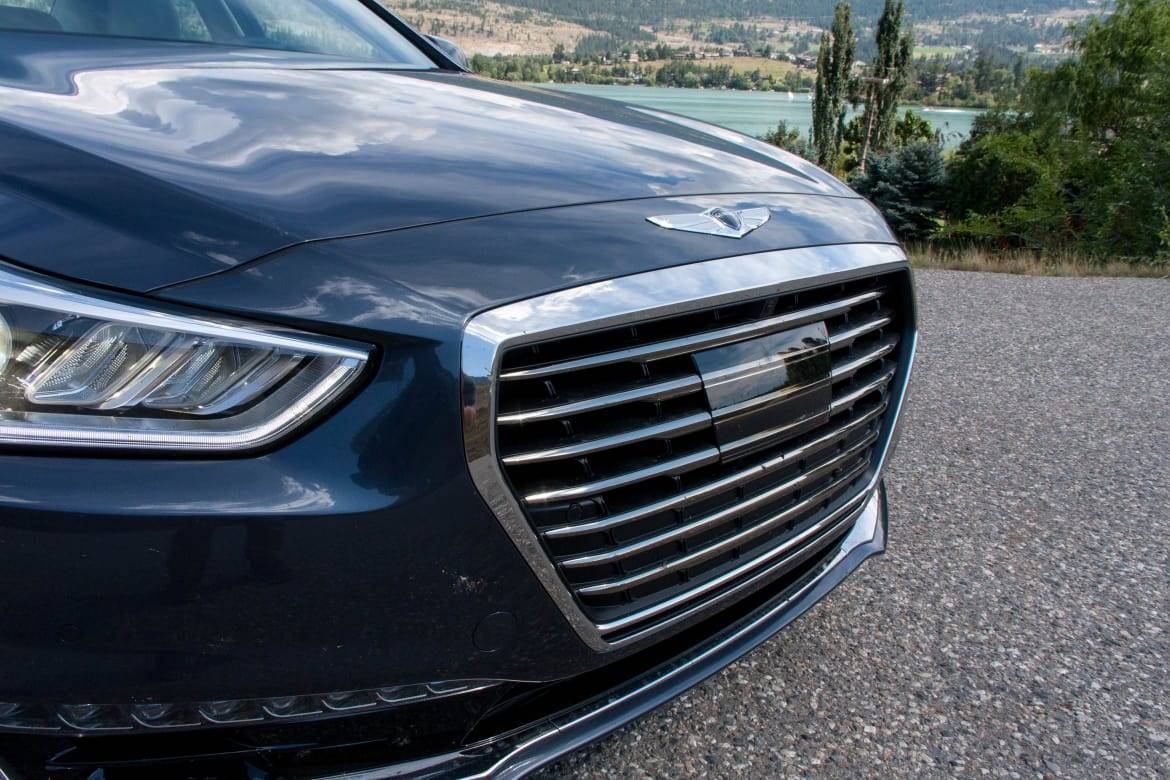
How It Drives
The G90 has two engine options, one of them brand-new. Debuting on the G90 as the base engine is a twin-turbocharged 3.3-liter V-6 that makes 365 horsepower and 376 pounds-feet of torque. Also available is the 5.0-liter V-8 from the Equus. It makes slightly less horsepower (420 vs. 429 last year) but adds an extra 7 pounds-feet of torque, pushing that figure to 383 pounds-feet. An eight-speed automatic with paddle shifters is standard.
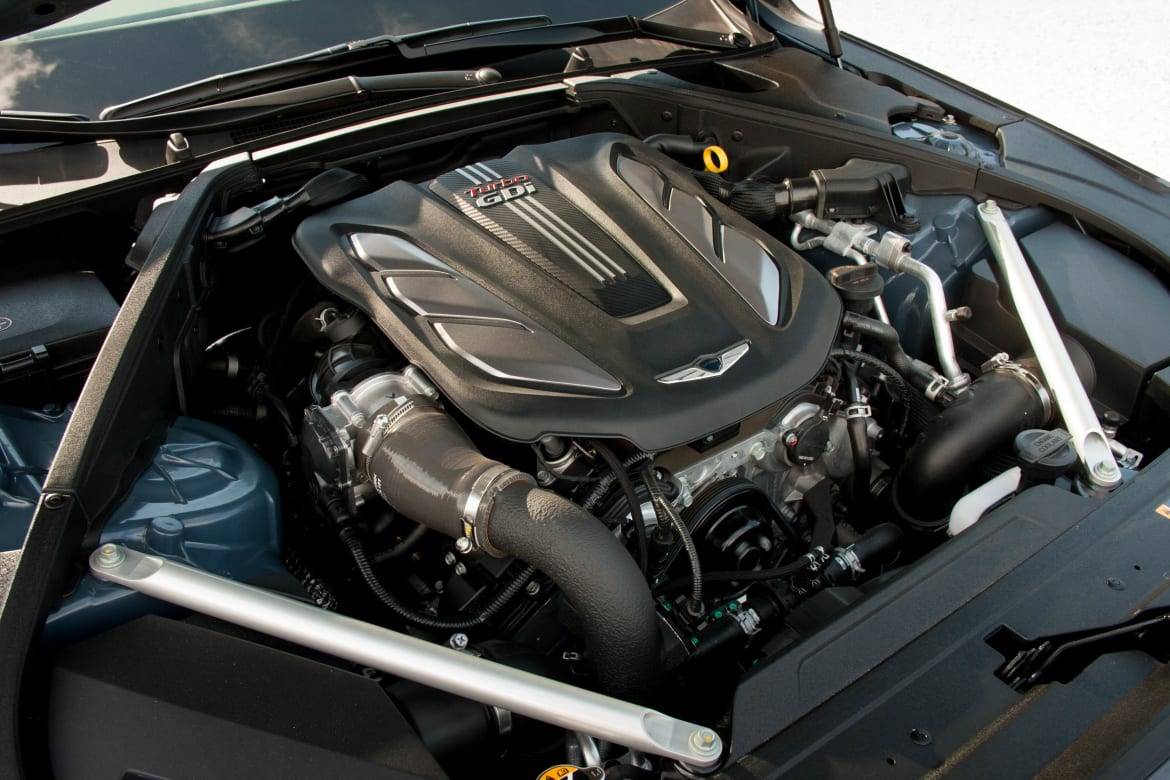
I drove both rear- and all-wheel-drive versions of the G90 V-6. This is the first twin-turbo V-6 to come out of the Hyundai family and its execution is great. Peak torque comes on at only 1,300 rpm and it feels more like a naturally aspirated engine than any other turbo I’ve gotten behind the wheel of, with no real turbo lag and smooth power delivery rather than the “kick” you get with some turbos. It also offered plenty of responsiveness for passing and quick merges, and it has what I’d call the “easy” power that a big luxury sedan needs — the engine doesn’t really feel taxed when you accelerate.
There was some vagueness I didn’t like in the G90’s steering and handling. In a straight line, it’s extremely comfortable, and the suspension does a fantastic job of isolating over a variety of road and weather conditions. It also does a great job of managing speed smoothly — almost too good. It’s easy to just be cruising along, then look down at the speedometer and suddenly need to brake a little. But when the roads start to curve a bit, the suspension squats down on the outside tires too much and there’s a lot of wobble in quick direction changes. This makes some sense given the G90’s approximately 4,800 pounds of curb weight and its focus on comfort and isolation, but the rebound from the springs could be better mitigated.
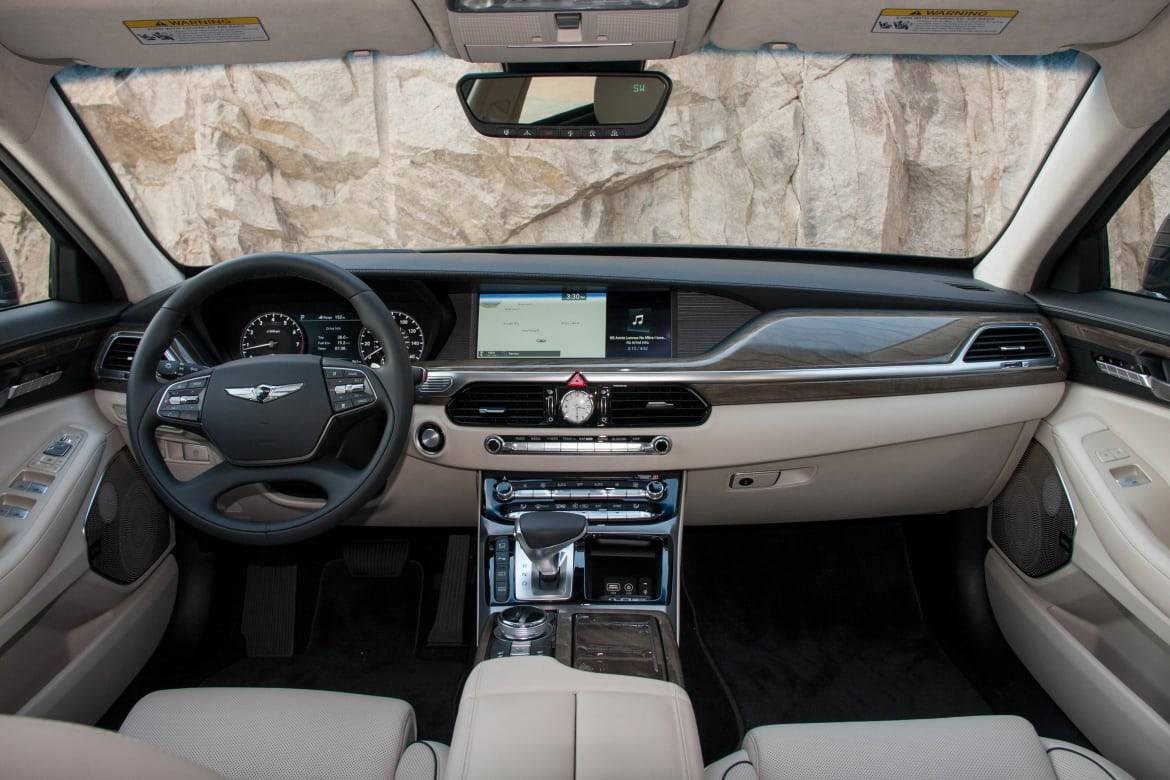
Interior Updates
If the G90 has a calling card, it’s inside, where the interior is full of both quality materials and features. I was able to find some hard plastic trim on the transmission tunnel, but I had to look for it — the rest of the touch points are leather or other soft material. And those are fantastic, some of the best I’ve experienced. The seats are super comfortable and, with 22 separate power adjustments for the driver’s seat, it was easy to find an ideal driving and seating position.
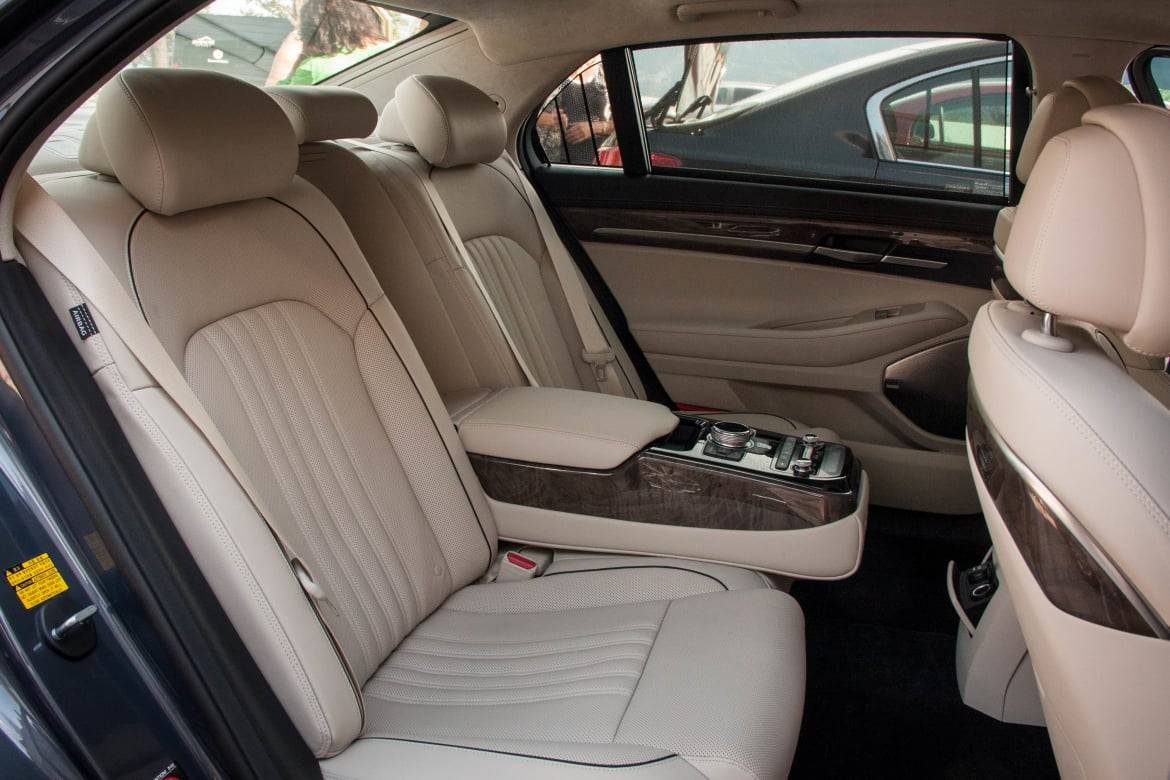
Earlier this year, I gave the G90 the nod on backseat comfort over three of its competitors that also entered the market in 2016 or 2017. There’s a lot of room in the back with plenty of leg- and headroom for outboard passengers. Popping out of the back of the center console are two 12-volt charge ports for devices, but a couple USB ports back there would be appreciated.
On the road, the G90 is super quiet, with not much wind or tire noise to speak of. You also don’t hear much of the V-6 by extension, but that’s a fine trade-off to make. Our drive covered about 300 miles and each one was comfortable and plush.
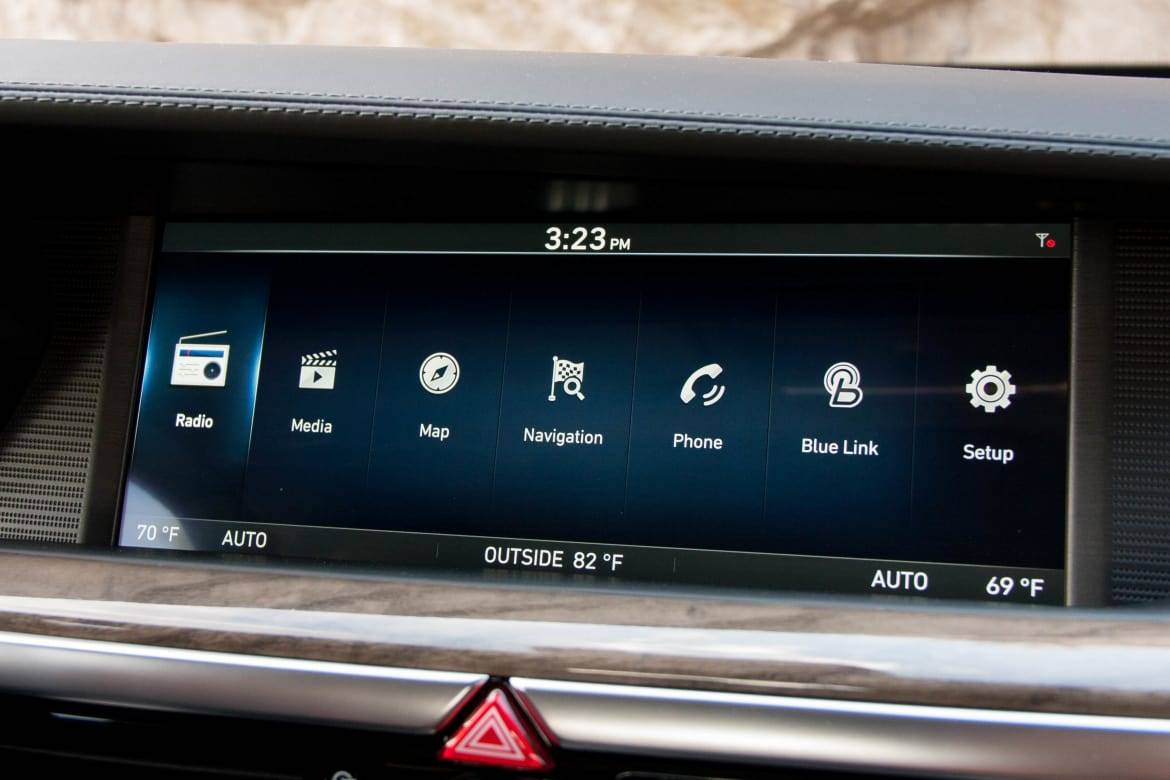
Science and Technology
The highlight of the interior changes comes on the technology front, the crown jewel of which is found at the center of the dash, a 12.3-inch widescreen LCD. Its size ties for the largest screen in the class with the Mercedes-Benz S-Class, but the G90’s has a higher resolution at 720 pixels. The screen is bright and visible, even through polarized sunglasses, and the multimedia system does an excellent job of using all of the screen’s real estate — certain menus and functions don’t need to take up the whole wide screen, so the system will reapportion the sides of the screen to show other useful info.
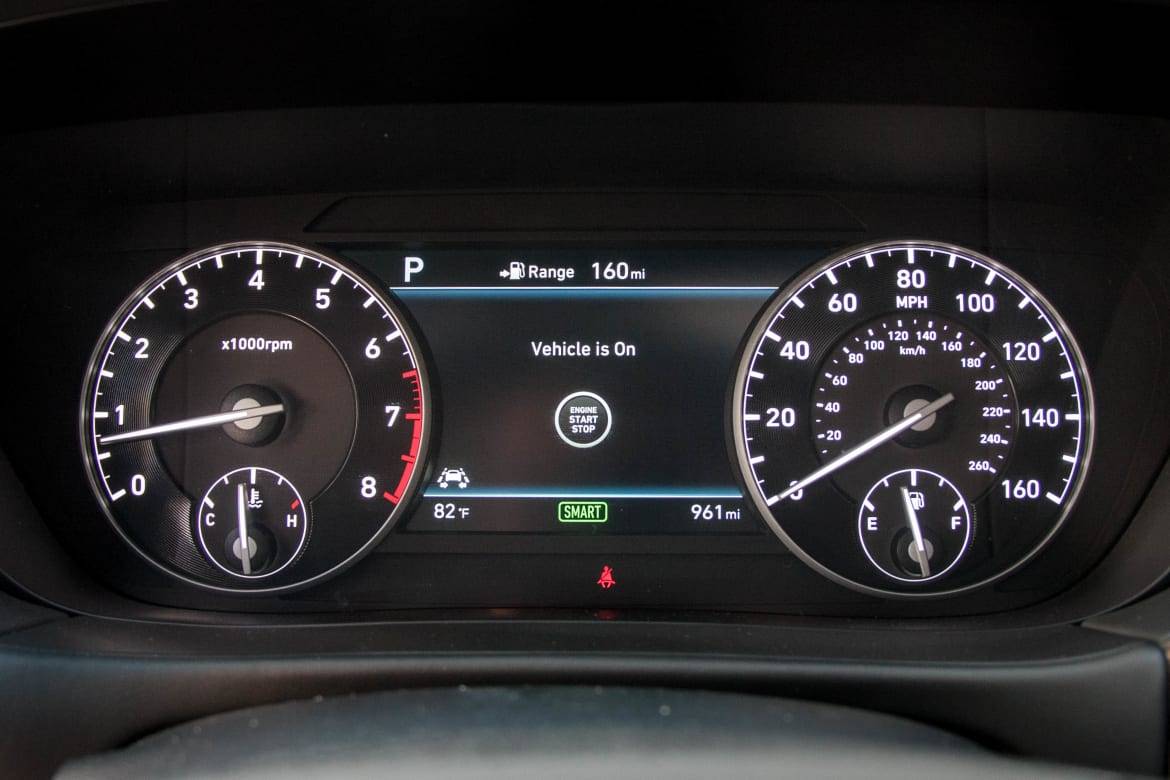
A second screen in the instrument panel shows the driver important information and the head-up display has been updated as well. It now displays blind spot warnings, an enhancement I really like and could view better than most comparable systems through polarized sunglasses. A small cubby next to the shifter also houses a USB port and a Qi wireless charging pad for those with newer smartphones. It fit my phone (a Samsung Galaxy S7 Edge with a case), which was impressive considering it’s one of the largest phones on sale today before you get into phablet territory.
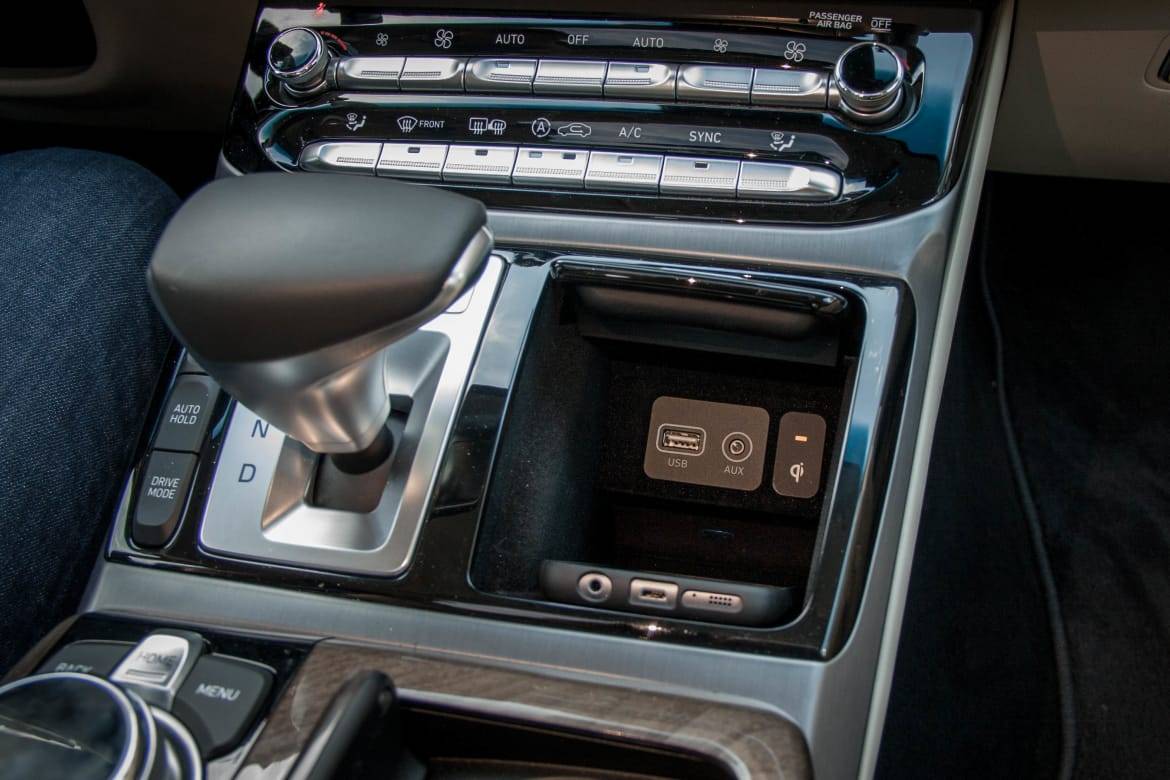
There is some bad news though: There is no Android Auto or Apple CarPlay and Genesis said that there are no plans to add it in the future. But to be honest, in this application, I didn’t really miss them. The Genesis system makes up for their absence with features like the ability to send directions from your phone to the car. The screen and controls are responsive to inputs and I was able to find the appropriate menus easily.
Safety Standard
Interior aside, the G90’s other calling card may be its safety features, where its largest competitive advantage lies. Every safety technology that Genesis offers comes standard. That means forward automatic emergency braking (with pedestrian detection), driver attention alerts, blind spot warning, lane departure prevention, adaptive cruise control with full stop and start, a color head-up display, a multi-camera system, automatic high beams, and front and rear parking sensors all come on every G90.
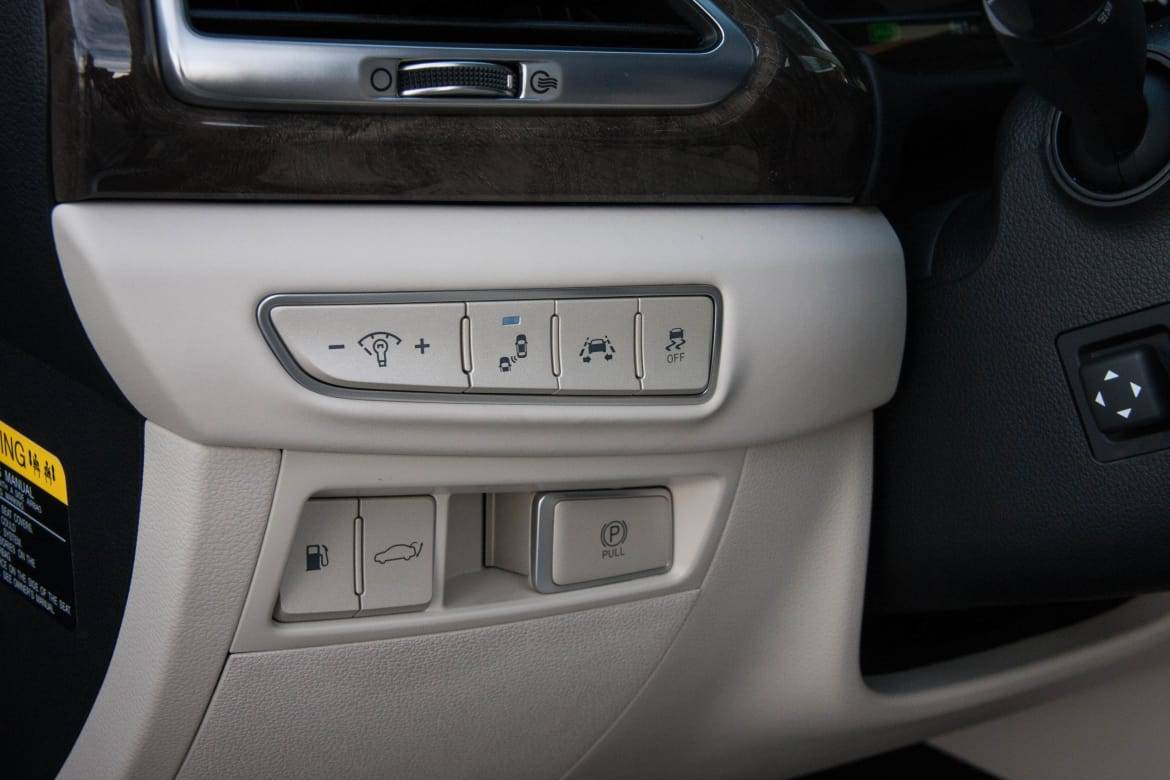
There are helpful cameras located all around the vehicle, four to power the around-view monitor and two others located in the front corners of the vehicle. The G90’s long hood makes it hard to see the front corners and these cameras are helpful when parking or exiting spaces.
I give the folks at Genesis a lot of credit for refining the safety systems that were brand-new or in their first iteration in the Equus. The systems performed pretty much flawlessly throughout the day. They helped rather than hindered the driving experience and being able to set the level of intrusion from the various technologies was an added bonus. The G90 will also keep your drive setting persistent — so no need to worry about things resetting when the car turns off.
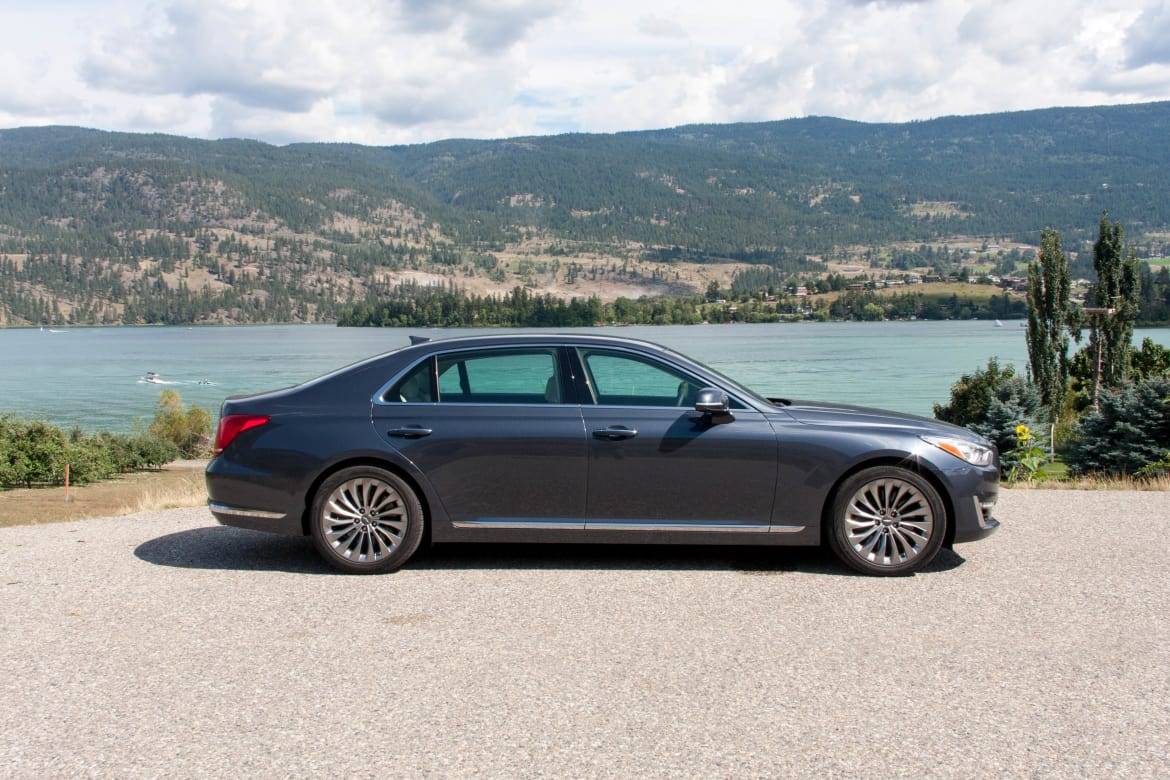
Value?
Genesis was not ready to release final pricing on the G90, other than to say that it will be more than the Equus. However, they did get into what ultimately may tip the scales in their favor in the minds of some buyers.
Genesis previously announced many complimentary services that will come along with G90 ownership and add value to the experience. This includes three years/36,000 miles of complimentary scheduled maintenance and valet service, which means that the dealer will come pick up the car (even from places other than your residence) and drop off a loaner vehicle. There is also three years’ complimentary SiriusXM Traffic, navigation updates, roadside assistance and Genesis Connected Services.
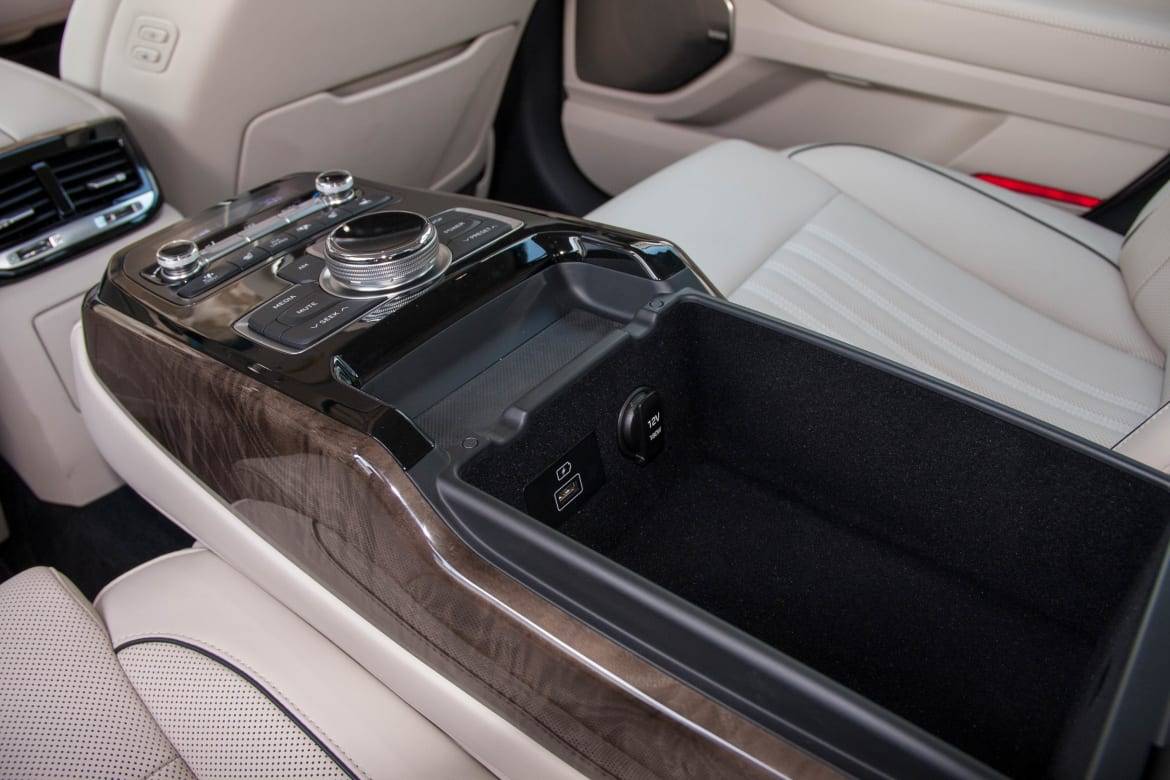
And Genesis recognizes that to break into the luxury game, fair or not, it’s going to have to offer more than established luxury brands at a lower price. They’ve done that on the features front: The G90 is seriously loaded in all forms (especially with safety features) and, if they can deliver on the luxury experience part of the equation, it bodes well for the new brand.
Hyundai already proved that it could build a luxury car, but the Equus did have some rough edges. Those have been smoothed out with the G90: It’s a bona fide flagship luxury sedan.
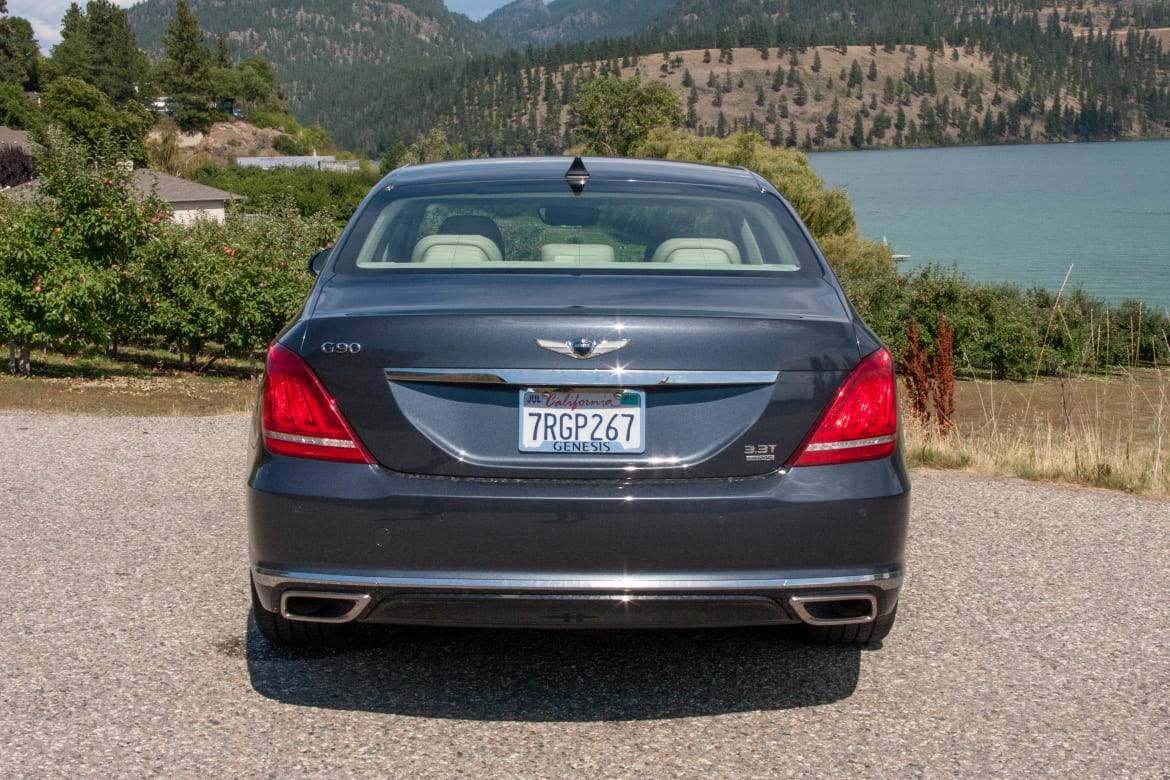

Former L.A. Bureau Chief Brian Wong is a California native with a soft spot for convertibles and free parking.
Featured stories



